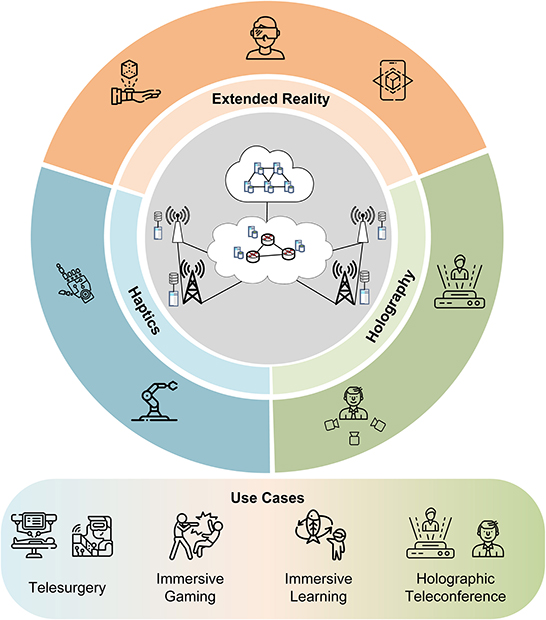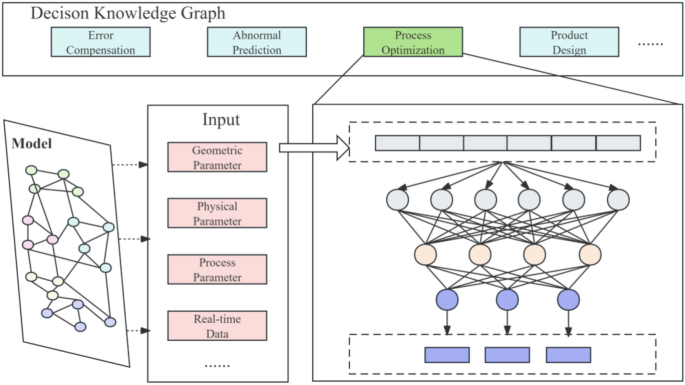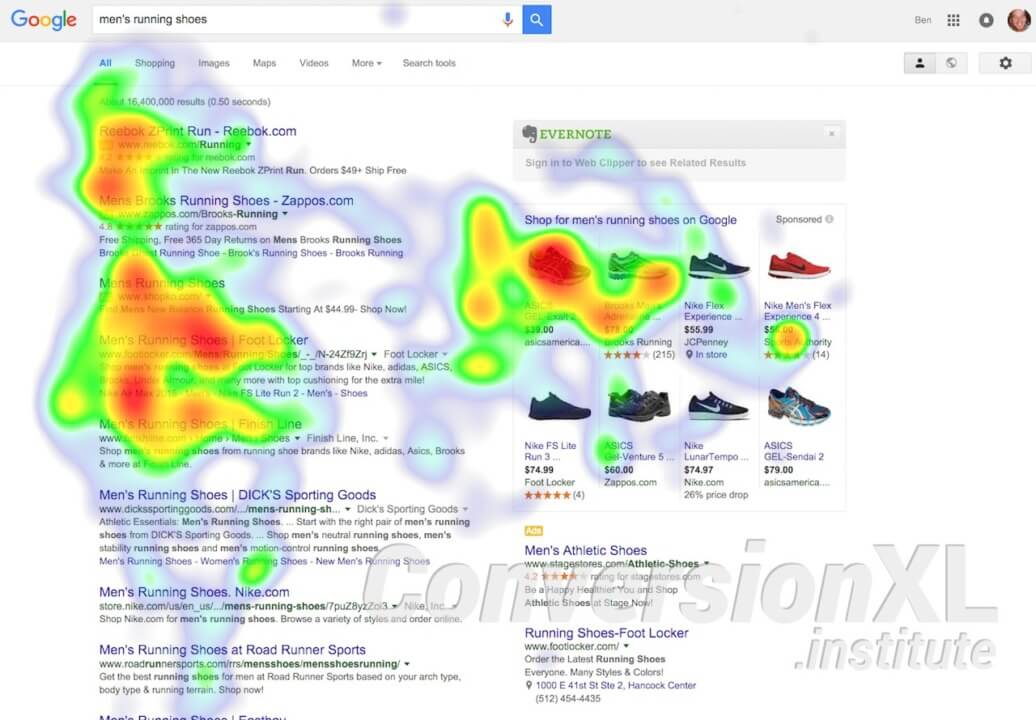The Future-First Approach: Visualizing Tomorrow's Reality to Win Today's Market
Harness the power of visual future narratives to transform your business strategy
I've discovered that when it comes to innovative ideas, showing the future is infinitely more powerful than simply describing it. In this guide, I'll share how creating compelling visual narratives of tomorrow can drive investment, create emotional connections, and make your vision feel inevitable today.
The Power of Future Visualization in Modern Business
In my experience working with innovative businesses, I've found that there's an undeniable psychological advantage to showing rather than telling when pitching groundbreaking ideas. When we create visual representations of future scenarios, we tap into something powerful – we're not just conveying information, we're creating an experience.

Visual future narratives create emotional investment from stakeholders and customers in ways that spreadsheets and bullet points simply cannot. I've seen firsthand how audiences lean forward when presented with compelling visual stories about how their world could change. This emotional connection is crucial because decisions – especially investment decisions – are ultimately emotional ones justified with logic afterward.
Traditional "current state" presentations often fail to inspire action for truly transformative ideas because they anchor the audience in today's limitations rather than tomorrow's possibilities. When I present a current problem followed by current capabilities, I'm inadvertently emphasizing the gap between them. But when I show a vivid future where the problem has been solved, I create what psychologists call a startup storytelling advantage – a "memory of the future" effect that makes my vision feel inevitable.
Funding Success by Presentation Approach
Statistical evidence shows significantly higher funding success rates for pitches that utilize visually-driven future narratives compared to traditional approaches.
The data is clear: presentations that create a vivid visual future consistently outperform traditional approaches in securing funding and driving stakeholder buy-in. By projecting ourselves into potential futures through visual storytelling, we create a shared vision that becomes a powerful tool for alignment and motivation.
Crafting Your Future-State Visual Story
When I develop a future-state visual story, I always start by identifying the core transformation my product or service delivers to the world. This isn't just about features or benefits – it's about fundamental change. What becomes possible in a world where my solution exists at scale? How does it reshape behaviors, systems, or expectations?

One of the most powerful techniques I've developed is visualizing second and third-order effects of innovations. First-order effects are obvious and expected – the direct results of your solution. But second and third-order effects show how your innovation creates ripple effects throughout systems and societies. These cascading impacts often reveal the true value proposition of transformative ideas.
The "Plausible Impossible" Framework
flowchart TD
A[Present Reality] --> B[Near Future]
B --> C[Future Vision]
subgraph "Plausibility Zone"
B
end
subgraph "Aspiration Zone"
C
end
D[Current Capabilities] --> B
E[Technology Trends] --> B
F[Market Demands] --> B
B --> G[Incremental Growth]
B --> H[New Opportunities]
C --> I[Transformative Impact]
C --> J[Market Leadership]
style A fill:#f5f5f5,stroke:#333
style B fill:#FFB066,stroke:#FF8000
style C fill:#FF8000,stroke:#E67300
style D fill:#f5f5f5,stroke:#333
style E fill:#f5f5f5,stroke:#333
style F fill:#f5f5f5,stroke:#333
style G fill:#f5f5f5,stroke:#333
style H fill:#f5f5f5,stroke:#333
style I fill:#f5f5f5,stroke:#333
style J fill:#f5f5f5,stroke:#333
I've found that balancing aspiration with credibility is crucial when crafting future visions. I call this the "plausible impossible" framework – pushing the boundaries of what seems possible while maintaining enough connection to current reality that stakeholders can see the path forward. This sweet spot is where truly inspiring future visions live.
When developing visual scenarios, I focus on highlighting specific pain points solved in the future world. Rather than abstract benefits, I show concrete before/after comparisons that demonstrate tangible value. For example, instead of claiming "improved efficiency," I might visualize a day in the life of a user showing exactly how much time is saved and what they can do with that reclaimed time.
PageOn.ai's AI Blocks feature has been transformative for my approach to visual storytelling. I can now construct modular visual narratives that evolve with my pitch, adapting to different audience priorities and questions. This flexibility allows me to maintain a consistent core vision while customizing the presentation for specific stakeholders, creating a more resonant and persuasive experience for each audience.
Visual Futurism Techniques That Drive Investment
Among the most effective techniques I've used is the "Day in the Life" future scenario. This approach shows your solution in everyday context, making abstract benefits concrete and relatable. By visualizing how real people interact with your innovation in their daily routines, you help investors and stakeholders emotionally connect with your vision.

Creating before/after visual comparisons with emotional impact has consistently proven to be one of my most persuasive approaches. These visuals need to do more than just show functional improvements – they need to evoke an emotional response that makes the status quo feel unacceptable and your future vision feel essential.
I've leveraged PageOn.ai's Deep Search capabilities to integrate relevant industry forecasts and economic forecasts visual scenarios into my presentations. This adds credibility by showing how my vision aligns with broader trends and expert projections about where markets are heading. The ability to quickly find and visualize this supporting data has been invaluable.
Visual Roadmap: Connecting Present to Future
gantt
dateFormat YYYY-MM
title Product Evolution Timeline
section Foundation
MVP Launch :done, mvp, 2023-01, 3m
Early Adopter Feedback :done, feedback, after mvp, 2m
Core Feature Refinement :done, refine, after feedback, 3m
section Growth
Market Expansion :active, expand, 2023-09, 6m
Strategic Partnerships :partner, 2024-01, 4m
Enhanced Analytics :analytics, 2024-03, 3m
section Future Vision
AI Integration :ai, 2024-06, 5m
Ecosystem Development :eco, 2024-08, 6m
Industry Transformation :milestone, transform, 2025-02, 0d
Building visual roadmaps that connect present capabilities to future possibilities has been crucial for my presentations. These roadmaps don't just show product development timelines – they illustrate how current proof points and capabilities evolve into the transformative future state. This creates a narrative bridge that makes ambitious visions feel achievable.
Case Study: Visual Future-State Storytelling Success
I recently worked with three startups that secured Series A funding using visual future-state storytelling techniques. The most successful case was a healthcare AI company that created immersive visualizations showing how their technology would transform patient diagnosis experiences by 2025.
Rather than focusing solely on their algorithm's current accuracy rates, they visualized the entire ecosystem their technology would enable – from streamlined hospital workflows to improved patient outcomes. Investors could "see" themselves in this future, making the decision to fund feel like participating in an inevitable transformation rather than taking a risk.
What made these startups successful wasn't just having a great product – it was their ability to transport investors into a future where that product had already transformed the market. By creating a visual personal brand story connected to a larger future vision, they made investors feel emotionally invested in making that future a reality.
From Abstract to Concrete: Making Tomorrow Tangible Today
One of my greatest challenges has been visualizing complex systems and their future evolution in ways that are immediately comprehensible. I've developed techniques for breaking down intricate concepts into visual components that tell a clear story about transformation over time.

Transforming data-heavy forecasts into compelling visual narratives is an art I've worked to master. Raw projections and statistics rarely inspire action on their own. However, when I visualize what those numbers mean for real people and systems, the data becomes a powerful storytelling tool that drives emotional connection.
Impact of Visualization on Concept Comprehension
Research shows significantly higher comprehension, retention, and emotional engagement when concepts are presented using future visualization techniques versus text-only approaches.
I've found that creating "future artifact" visuals – mockups of products, interfaces, or environments that don't yet exist – makes abstract concepts feel remarkably real. These artifacts serve as tangible proof points for your vision, helping audiences mentally step into the future you're describing.
Using PageOn.ai's Vibe Creation feature has revolutionized my workflow for rapidly generating consistent future-state visuals. I can now create a cohesive visual language for my future scenarios in a fraction of the time it once took, ensuring that all elements of my presentation reinforce the same vision and emotional tone.
When visualizing market expansion and scaling in future scenarios, I focus on showing both the macro view (market penetration, growth curves) and the micro view (individual user experiences, specific use cases). This combination helps stakeholders understand both the business potential and the human impact of the vision I'm presenting.
Building Credibility Into Your Future Vision
I've learned that incorporating global economy 2025 forecasts and industry projections as visual anchors significantly enhances the credibility of future visions. By showing how my vision aligns with respected third-party predictions about market evolution, I create a foundation of plausibility for even my most ambitious claims.

Visualizing the progression from current technology trends to your future state is crucial for building credibility. I create visual narratives that show how existing technologies and market forces naturally evolve toward my envisioned future, making that future feel like an inevitable conclusion rather than a speculative leap.
Technology Evolution Pathway
flowchart TD
A[Current Technology] --> B[Near-Term Evolution]
B --> C[Mid-Term Capabilities]
C --> D[Future Vision]
A --> E[Market Proof Point 1]
A --> F[Market Proof Point 2]
B --> G[Emerging Trend 1]
B --> H[Emerging Trend 2]
C --> I[Industry Forecast 1]
C --> J[Industry Forecast 2]
E -.-> K[Credibility Bridge]
F -.-> K
G -.-> K
H -.-> K
I -.-> K
J -.-> K
K --> D
style A fill:#f5f5f5,stroke:#333
style B fill:#f5f5f5,stroke:#333
style C fill:#f5f5f5,stroke:#333
style D fill:#FF8000,stroke:#E67300
style K fill:#FFB066,stroke:#FF8000
Creating visual "breadcrumbs" that connect today's proof points to tomorrow's vision has been one of my most effective techniques. I identify existing signals – early adopters, initial results, industry movements – and visually connect them to show how they're already pointing toward the future I'm describing. This creates a narrative of momentum that's already underway.
I've leveraged PageOn.ai to integrate authoritative data visualizations that support my narrative, which adds significant credibility to my presentations. The platform's ability to transform complex datasets into clear, compelling visuals helps me demonstrate that my future vision is built on solid evidence and reasonable projections.
In my experience, balancing moonshot thinking with practical implementation visuals is essential. I always include both aspirational future-state visuals and more immediate, tactical visualizations that show the concrete steps toward that future. This combination reassures stakeholders that while the vision is bold, the path to achieving it is grounded and well-considered.
Testing and Refining Your Future Vision
I've found enormous value in A/B testing different visual future scenarios with target audiences. By creating multiple versions of key visuals and measuring audience response, I can identify which aspects of my future vision resonate most strongly and refine my presentation accordingly.

When gathering feedback on visual future narratives, I use specific techniques to elicit useful insights. Rather than asking general questions like "What do you think?", I ask targeted questions about comprehension, emotional response, perceived credibility, and motivation to act. This structured feedback helps me identify precisely which elements need refinement.
Audience Feedback on Future Vision Elements
Comparison of audience ratings before and after refining future vision elements based on structured feedback.
Using PageOn.ai's agentic capabilities to rapidly iterate visual presentations has transformed my workflow. I can now generate multiple variations of key visuals quickly, test them with stakeholders, and refine based on feedback – all within timeframes that would have been impossible with traditional design processes.
I've become adept at creating modular future-state visuals that adapt to different stakeholder perspectives. By building a library of visual components that can be recombined and emphasized differently depending on the audience, I maintain a consistent core vision while highlighting the aspects most relevant to each stakeholder group.
As market conditions change, I've learned to evolve my visual future narrative accordingly. The most effective future visions aren't static – they incorporate new data, respond to emerging trends, and adjust to shifting market realities while maintaining their core transformative promise. This adaptive approach maintains credibility even as the landscape changes.
Implementing the Future-First Presentation Strategy
I've found that structuring presentations to begin with the future and work backward creates a powerful narrative framework. By first immersing the audience in a compelling vision of what could be, I establish an emotional connection that makes the subsequent explanation of how to get there much more engaging.

Creating immersive visual experiences that transport audiences to your future requires more than just static images. I combine various visual elements – animations, interactive components, environmental context, human elements – to create a multi-dimensional experience that feels real and immediate.
Future-First Presentation Structure
flowchart TD
A[Open With Future Vision] --> B[Emotional Connection]
A --> C[Problem Context]
B --> D[Current Capabilities]
C --> D
D --> E[Implementation Roadmap]
E --> F[Near-Term Actions]
E --> G[Mid-Term Milestones]
E --> H[Long-Term Vision]
F --> I[Call to Action]
G -.-> I
H -.-> I
style A fill:#FF8000,stroke:#E67300
style B fill:#FFB066,stroke:#FF8000
style C fill:#FFB066,stroke:#FF8000
style I fill:#FF8000,stroke:#E67300
I've developed specific techniques for transitioning between future vision and current execution capabilities in my presentations. These transitions are critical moments that must maintain audience engagement while shifting from aspirational to practical content. Visual bridges – elements that appear in both future and current-state visuals – help create a seamless narrative flow.
Using PageOn.ai to build consistent visual language across all future-state materials has been invaluable for my presentations. The platform helps me maintain visual coherence – consistent colors, icons, styles, and metaphors – that reinforces my narrative and makes complex ideas more accessible.
Measuring the effectiveness of a future-first visual approach requires looking beyond traditional metrics. While engagement and comprehension are important, I also track indicators like emotional response, vision alignment (how well stakeholders can articulate the vision back to me), and motivation to act. These metrics better capture whether my visual future narrative is truly driving the desired outcomes.
Transform Your Visual Expressions with PageOn.ai
Ready to create compelling future visualizations that sell your vision and drive action? PageOn.ai gives you the tools to craft immersive visual narratives that make tomorrow's possibilities feel real today.
Start Creating with PageOn.ai TodayBringing It All Together
Throughout this guide, I've shared my approach to creating compelling visual future narratives that drive action and investment. By showing rather than telling, connecting emotionally with audiences, and making abstract possibilities feel concrete, we can transform how stakeholders perceive and engage with innovative ideas.
The future-first approach isn't just a presentation technique – it's a mindset that places vision at the center of strategy and communication. By living in the future through powerful visualizations, we create a gravitational pull that draws others toward our vision and accelerates its realization.
As you develop your own future visualizations, remember that the most compelling visions balance aspiration with credibility, connect emotionally with audiences, and provide clear pathways from present to future. With tools like PageOn.ai, creating these powerful visual narratives has never been more accessible – allowing innovators of all kinds to bring tomorrow's possibilities to life today.
You Might Also Like
10 Hidden Google Workspace Marketplace Gems for Transforming Your Presentations
Discover 10 powerful Google Workspace Marketplace add-ons that will revolutionize how you create, deliver, and collaborate on presentations. Unlock hidden gems for presenters.
Transforming Presentation Creation Through Conversational AI | Building Presentations With Natural Language
Discover how natural language conversations are revolutionizing presentation creation, enabling faster, more intuitive visual storytelling with AI assistance that transforms abstract ideas into compelling visuals.
Transforming IT Support: Visual AI Solutions for Employee Help Desk Without the Wait
Discover how visual AI transforms traditional IT help desks into efficient support systems that eliminate wait times and boost productivity with interactive visual troubleshooting solutions.
Automating Research and Outlining for Educational Slides | AI-Powered Visual Learning
Discover how AI automation revolutionizes educational slide creation, reducing preparation time from hours to minutes while enhancing learning outcomes through powerful visual presentations.
